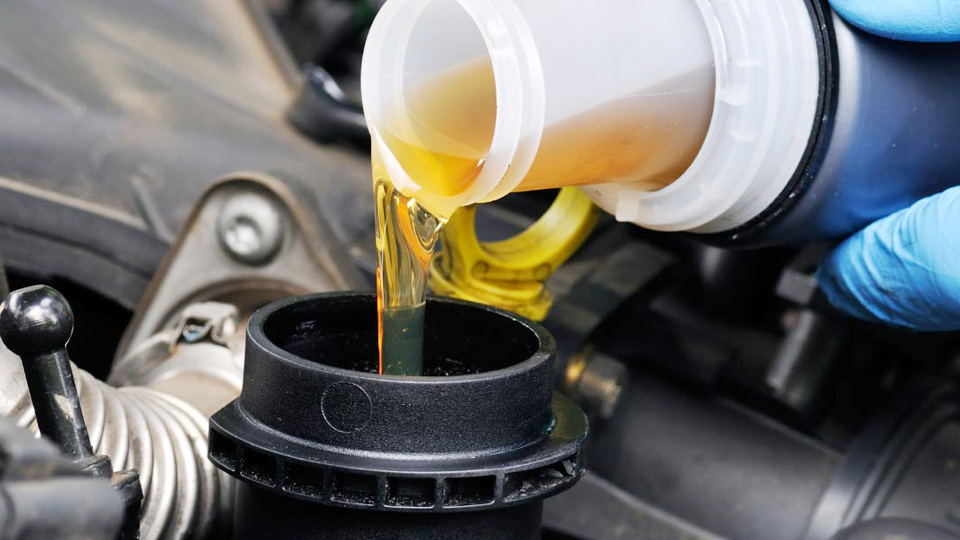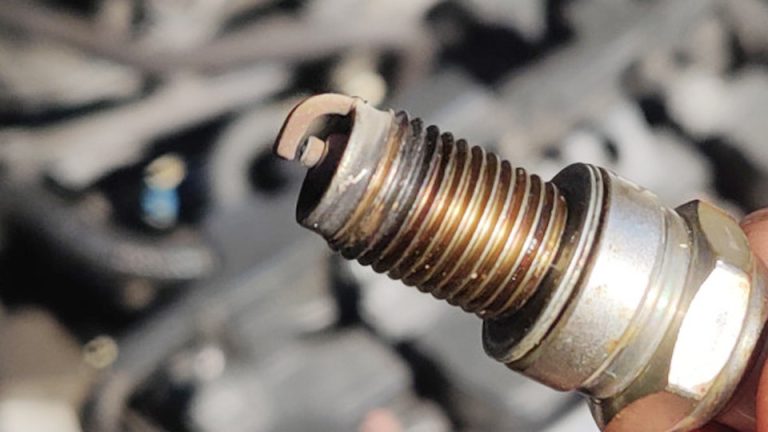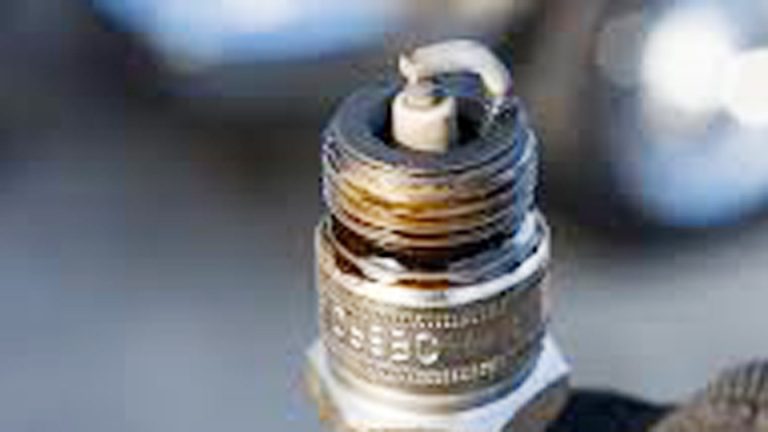You’re about to head out, you check under the hood, and then the question hits: “what type of oil and oil filter for my car?” I’ve had that conversation with more drivers than I can count, and it’s one of the most common questions I get in the shop. The truth is, the oil and filter you choose make a huge difference—clean oil keeps the engine cool and smooth, while the right filter stops harmful dirt and debris from doing real damage.
Too many times I’ve seen people pick the wrong grade of oil or a bargain filter, only to come back with bigger, more expensive problems. From my experience, getting this step right isn’t just maintenance—it’s the key to keeping your engine healthy and your car on the road.

Image by china-truck-part
How to Determine the Right Oil Type for Your Car
Figuring out the perfect oil for your ride isn’t rocket science, but it does take a bit of detective work. Back in my early days apprenticing at a dealership, I’d always start by popping open the owner’s manual—it’s your bible for this stuff. Most manuals list the recommended viscosity, like 5W-30 or 0W-20, right in the maintenance section. If you’ve lost yours, check under the hood; many cars have a sticker on the oil cap or filler neck spelling it out.
What if you’re driving an older model without those hints? I’ve dealt with plenty of classic Mustangs and Jeeps where owners were clueless. Head to the manufacturer’s website or an auto parts store like AutoZone or NAPA—they’ve got lookup tools where you punch in your make, model, year, and engine size for instant recommendations.
For example, a 2020 Chevy Silverado might call for 0W-20 synthetic, while a 2015 Toyota Camry often runs best on 5W-30 conventional. Climate plays a role too; in colder states like Minnesota, I’ve swapped to lower-viscosity oils to ease cold starts, preventing that sluggish turnover on frosty mornings.
Oil comes in different types: conventional, synthetic blend, full synthetic, and high-mileage formulas. Conventional is your basic dino oil—cheap and fine for older engines but breaks down faster in heat. I’ve used it on budget jobs for fleet vans, but for modern cars, synthetic is king. It flows better in extremes, resists breakdown, and can handle turbocharged setups without turning to sludge.
Remember that time I rebuilt a Subaru Outback engine? The owner had been using cheap conventional in a high-heat environment, and the varnish buildup was insane. Switched him to full synthetic, and that motor purred for another 100,000 miles.
Oil Viscosity and Grades
Viscosity is that number-letter combo you see on bottles, like 10W-40. The “W” stands for winter, indicating how well it flows when cold—the lower the number, the better for chilly weather. The second number is hot-weather performance; higher means thicker protection under load. I’ve tested this hands-on with a viscosity tester in the shop; a 5W-30 thins out nicely at startup but stays robust at highway speeds.
Grades refer to API ratings like SN or SP—these ensure the oil meets modern standards for detergents and additives. For US vehicles, stick to what’s in your manual to avoid warranty issues. I’ve seen folks mix grades thinking it’s no big deal, only to end up with gunked-up valves. Pro tip: If your car has over 75,000 miles, consider high-mileage oil with seal conditioners to prevent leaks—I’ve saved many an older Dodge Ram from dripping oil this way.
Conventional vs Synthetic: Which is Best for Your Engine?
Picking between conventional and synthetic boils down to your driving habits and budget. Conventional oil, derived from crude, is affordable—around $20-30 for a 5-quart jug at Walmart—and works well for light-duty use. But it degrades quicker, especially in stop-and-go traffic, leading to more frequent changes.
Synthetic, made in labs, offers superior protection. Brands like Mobil 1 or Castrol Edge hold up in extreme temps, reducing wear by up to 50% in tests I’ve seen. It’s pricier, maybe $40-60 per change, but extends intervals to 7,500-10,000 miles. I once had a customer with a BMW 3 Series who switched to synthetic after burning through conventional every 3,000 miles; his fuel efficiency jumped, and the engine ran cooler during summer hauls.
Pros of synthetic: Better lubrication, fewer deposits, improved MPG. Cons: Higher cost upfront. For conventional: Cheap, widely available, but needs more swaps and offers less protection in turbos or high-performance engines.
Popular Motor Oil Brands in the US: Comparisons and Recommendations
In the States, we’ve got a ton of solid brands at places like O’Reilly or Advance Auto. I’ve tried most in real vehicles, from daily drivers to off-road beasts. Here’s a quick comparison table based on my shop experience:
| Brand | Type Options | Price Range (5 qt) | Pros | Cons | Best For |
|---|---|---|---|---|---|
| Mobil 1 | Full Synthetic | $40-50 | Excellent high-temp stability, great for turbos; I’ve used it in Audis with zero issues. | Premium price. | High-performance cars like Mustangs or Subarus. |
| Castrol Edge | Synthetic Blend/Full | $30-45 | Strong detergents reduce sludge; smoothed out a noisy Chevy V8 for me once. | Can be hard to find in bulk. | Everyday sedans like Honda Accords. |
| Pennzoil Platinum | Full Synthetic | $35-50 | Made from natural gas, ultra-clean; revived a high-mileage Ford Explorer’s engine seals. | Slightly thicker in cold. | Trucks and SUVs in varying climates. |
| Valvoline SynPower | Full Synthetic | $30-40 | Affordable synthetic with good additives; reliable in my own F-150 for years. | Not as specialized for exotics. | Budget-conscious DIYers with domestics. |
| Royal Purple | Full Synthetic | $45-60 | Racing-grade protection; cut wear in a modified Jeep Wrangler I tuned. | Overkill for commuters. | Performance enthusiasts. |
These are staples in US markets—easy to grab at big-box stores. I lean toward Mobil 1 for most jobs because it’s versatile, but always match to your car’s specs. Anecdote: I remember a guy bringing in his 2018 Ram 1500 complaining of knocking. Turns out he’d been using off-brand conventional; switched to Pennzoil synthetic, and the noise vanished after one change.
Signs of Bad or Dirty Oil and When to Act
Oil doesn’t last forever, and ignoring signs can lead to big trouble. Common problems? Dark, gritty oil on the dipstick—I’ve pulled dipsticks that looked like chocolate milk from water contamination, signaling head gasket issues. Or low oil pressure warnings lighting up your dash, often from sludge buildup.
Signs of failure include engine knocking (starved bearings), reduced acceleration (poor lubrication), or even blue smoke from the exhaust (burning oil). If your filter’s clogged, expect sputtering or overheating—I’ve diagnosed this on Hyundais where cheap filters failed early. Why replace? To prevent wear; dirty oil can cut engine life by 20-30%. I’ve seen Fords with 200,000 miles thrive on regular changes, while neglected ones conk out at 100,000.
What an Oil Filter Is and Why It Matters for Your Car
The oil filter is your engine’s kidney, trapping dirt, metal shavings, and gunk so clean oil circulates. Without it, contaminants would chew up pistons and cams. In performance terms, a good filter maintains pressure, boosts efficiency, and extends oil life—saving you money long-term.
Common issues: Clogging leads to bypass mode, where unfiltered oil flows, risking damage. Signs? Low pressure, ticking noises, or poor MPG. I’ve cut open failed filters from Kias filled with debris after just 5,000 miles on dusty roads.
Types of Oil Filters for Different Cars
Filters vary by vehicle—spin-on for easy swaps on most domestics like Chevys, cartridge types in Europeans like VWs. Primary (full-flow) filters handle all oil, ideal for cold climates; secondary ones add extra filtration for heavy-duty use.
For trucks like Silverados, I recommend high-capacity spin-ons; sedans like Civics do fine with standard. Magnetic filters grab metal bits in high-wear engines, like those in Jeeps. Not all fit every car—I’ve mismatched once on a Mazda, causing leaks—so use lookup tools.
OEM vs Aftermarket Oil Filters: Pros, Cons, and My Take
OEM filters from brands like Motorcraft (Ford) or AC Delco (GM) are factory-spec, ensuring perfect fit and warranty compliance. But aftermarket from FRAM or Wix can be cheaper and sometimes better built.
Here’s a comparison:
| Aspect | OEM | Aftermarket |
|---|---|---|
| Price | Higher ($15-25) | Lower ($5-15) |
| Quality | Consistent, tested for your model | Varies; premium like Mobil 1 rivals OEM |
| Pros | Exact fit, reliable; I’ve never had an OEM fail prematurely. | Affordable, often upgraded media for better flow. |
| Cons | Costly, limited options. | Quality lottery; cheap ones tear easily. |
| Best For | Newer vehicles under warranty. | DIY budgets, with reputable brands. |
From experience, OEM shines for precision engines like in BMWs, but for my old Chevy, a good aftermarket saves cash without issues. Anecdote: Swapped an aftermarket on a client’s Tacoma—saved him $10 per change, and it held up through off-roading.
How to Spot Genuine vs Fake Oil Filters
Fakes flood the market, especially online. I’ve cracked open counterfeits that collapsed under pressure, starving engines. Check packaging: Genuine Toyota filters have holographic stickers; fakes lack depth. Feel the build—real ones have sturdy cans you can’t dent by hand.
Cut one open if suspicious: Legit filters have dense media and metal screens; fakes skimp. Buy from trusted spots like dealerships or AutoZone to avoid this. I once installed a fake on accident—engine rattled after 1,000 miles; lesson learned.
When and Why to Replace Your Oil and Filter
Replacement intervals depend on your car and oil type. Conventional? Every 3,000-5,000 miles. Synthetic? Stretch to 7,500-10,000. Trucks like Rams in towing duty need more frequent swaps; commuters in Priuses can go longer.
Why now? To flush contaminants and maintain efficiency. I’ve extended intervals on synthetics for fleet vehicles, but always check the dipstick monthly. For time-based, don’t exceed 6-12 months, even low miles—oil oxidizes.
Step-by-Step Guide to Changing Your Oil and Filter
Ready to get greasy? I’ve done thousands—here’s how, safely.
Tools: Jack stands, wrench set, oil filter wrench, drain pan, funnel, rags, new oil/filter, gloves.
- Warm the engine 5-10 minutes for easier drain, but not hot to avoid burns.
- Park level, engage brake, jack up if needed (use stands—never just a jack).
- Locate drain plug under pan; place pan beneath, remove plug (counter-clockwise). Let drain 10-15 minutes.
- Wipe plug, replace washer if crushed, reinstall snug (not over-tight—I’ve stripped threads before).
- Find filter (usually side of block); use wrench to loosen (counter-clockwise). Drain into pan.
- Lube new filter’s gasket with fresh oil, fill halfway with oil to prime.
- Screw on hand-tight, plus 3/4 turn. Don’t overtighten—leaks ensue.
- Lower car, add oil via filler cap (check manual for capacity—e.g., 5 quarts for many V6s).
- Run engine 1-2 minutes, check for leaks, top off.
- Reset maintenance light if needed.
Common mistakes? Forgetting to warm oil (slow drain), dropping plug in pan (fishing expedition), or overfilling (foaming issues). Safety: Wear goggles, dispose oil properly at recycling centers.
Anecdote: Teaching a buddy on his Nissan Altima, he overtorqued the filter—cracked it. We laughed, but it reinforced checking torque specs.
Common Mistakes in Oil Changes and How to Avoid Them
I’ve seen ’em all: Wrong oil type causing sludge (always double-check viscosity). Not letting filter dry after lubing—slippery install leads to loose fits.
Under/overfilling: Measure twice; I’ve drained excess from overzealous DIYers. Stripping plugs: Use torque wrench (e.g., 20-25 ft-lbs for most). Forgetting cap: Oil sprays everywhere—happened to me once on a rush job.
Bypass these by prepping tools, working methodically, and checking work twice.
Best Practices for Oil Maintenance and Longevity
Keep levels topped—check bi-weekly; low oil starves engines. Use quality additives if high-mileage. For US roads, factor dust/seasons—more changes in dusty areas.
Store oil cool/dry; I’ve tossed oxidized jugs. Track mileage in a log; apps help too. Pair with air filter checks for overall health.
Conclusion
Nailing the right oil and filter for your car boils down to knowing your vehicle’s needs, picking quality products, and staying on top of maintenance. Whether you’re rocking synthetic in a turbo Chevy or conventional in a trusty Toyota, this setup boosts performance, cuts costs, and keeps you safe. From my garage days, the smartest owners are those who treat oil changes like routine checkups—preventive, not reactive.
How Often Should I Change My Oil?
It varies by oil type and driving—3,000-5,000 miles for conventional, up to 10,000 for synthetic. Check your manual, but don’t go over a year regardless of miles.
What’s the Difference Between 5W-20 and 5W-30 Oil?
Both flow well cold (5W), but 5W-30 is thicker hot for better protection in older or high-load engines. I’ve used 5W-20 in efficient Fords for MPG gains.
Can I Mix Different Oil Brands?
Sure, if same type and viscosity, but I avoid it—additives might clash. Stick to one for consistency.
How Do I Know If My Oil Filter Is Clogged?
Look for low pressure lights, knocking, or sputtering. I’ve pulled clogged ones causing overheat; replace at every oil change to sidestep.
Is Synthetic Oil Worth the Extra Cost?
Absolutely for modern cars—longer life, better protection. Saved a client’s GMC Sierra from early wear after switching from conventional.



